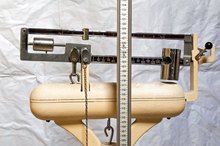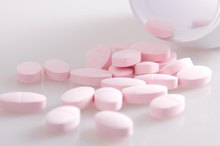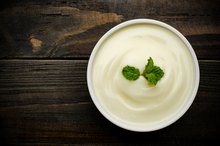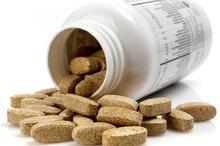What does fact checked mean?
At Healthfully, we strive to deliver objective content that is accurate and up-to-date. Our team periodically reviews articles in order to ensure content quality. The sources cited below consist of evidence from peer-reviewed journals, prominent medical organizations, academic associations, and government data.
- Mayo Clinic: Dietary Fiber: Essential for a Healthy Diet
- National Institutes of Health: The Treatment of Chronic Constipation in Elderly People
- National Institutes of Health: The Treatment of Chronic Constipation in Elderly People
- National Institute of Aging: Healthy Eating After 50
The information contained on this site is for informational purposes only, and should not be used as a substitute for the advice of a professional health care provider. Please check with the appropriate physician regarding health questions and concerns. Although we strive to deliver accurate and up-to-date information, no guarantee to that effect is made.
Diet for a 56 Year Old
As you age, your body changes along with your dietary and nutritional needs. The changes experienced are greatly influenced by hereditary factors and illnesses. Changing your diet to include necessary nutrients may reduce the risk of developing certain health conditions such as osteoporosis. According to the International Osteoporosis Foundation, osteoporosis affects approximately 75 million people in Japan, Europe and the U.S.
Calcium
Most people reach their peak bone mass between the ages of 18 and 25 years of age. According to New York State Department of Health, if your calcium intake is too low, your body will begin to withdraw calcium stored in your bones, which may lead to osteoporosis 1. In addition, calcium aids in the clotting of blood. The recommended daily calcium intake for males and females over the age of 50 is 1,200 mg. Cheese, yogurt, milk and calcium-fortified cereals are good sources of calcium.
- Most people reach their peak bone mass between the ages of 18 and 25 years of age.
- In addition, calcium aids in the clotting of blood.
Protein
Healthy Diet for an Obese 60 Year Old Woman
Learn More
Protein is essential for the building and maintaining of muscles regardless of your age. However, when you reach your 50s, muscle deterioration begins to occur. According to Medical News Today, diets containing sufficient amounts of protein-rich foods such as:
- nuts
- dairy
- chicken
- pork
- beef may slow the deterioration of muscles
The daily recommended intake of protein for 56-year-old males is 56 g and 46 g for females of the same age.
Fiber
Chronic constipation is common among older adults. Chronic constipation is the result of several factors such as reduced liquid and fiber intake, decreased activity and medications. Diets rich in dietary fiber may prevent or reduce the frequency of constipation. Aside from alleviating constipation, high fiber diets have many benefits such as lowering blood cholesterol levels, maintaining bowel health, controlling blood sugar levels and may aid in weight loss 6. MayoClinic.com states that the recommended daily fiber intake for males over the age of 51 is 30 g and 21 g for females over 51. Sources of high-fiber foods include vegetables, nuts, whole-grain products and fruits.
- Chronic constipation is common among older adults.
- Aside from alleviating constipation, high fiber diets have many benefits such as lowering blood cholesterol levels, maintaining bowel health, controlling blood sugar levels and may aid in weight loss 6.
Calorie Intake
Can Vitamins Help Reduce Stiff Muscles in the Lower Back & Butt?
Learn More
According to the National Institute of Aging, your activity level determines the amount of food you should be eating 5. For instance, women over the age of 50 that live an active lifestyle need to consume between 2,000 and 2,200 calories. Men over 50 who are active need between 2,400 and 2,800 calories. Calories are necessary for energy production and when your body consumes more calories than it uses, it may lead to weight gain.
- According to the National Institute of Aging, your activity level determines the amount of food you should be eating 5.
- For instance, women over the age of 50 that live an active lifestyle need to consume between 2,000 and 2,200 calories.
Warnings
Discovery Health states that too much fiber may lead to gas, bloating, abdominal cramps and diarrhea 6. In addition, excessive fiber intake may interfere with mineral absorption. Always check with your doctor prior to making any dietary changes.
Related Articles
References
- New York State Department of Health: Promoting Healthy Bones
- Medical News Today: Seniors Need More Protein Rich Food to Decrease Muscle Loss, Improve Quality of Life
- Mayo Clinic: Dietary Fiber: Essential for a Healthy Diet
- National Institutes of Health: The Treatment of Chronic Constipation in Elderly People
- National Institute of Aging: Healthy Eating After 50
- Discovery Health: Fiber
- Dahl WJ, Stewart ML. Position of the Academy of Nutrition and Dietetics: Health Implications of Dietary Fiber. J Acad Nutr Diet. 2015 Nov;115(11):1861-70. doi: 10.1016/j.jand.2015.09.003.
- Francesca De Filippis, et.al. High-level adherence to a Mediterranean diet beneficially impacts the gut microbiota and associated metabolome. Gut, 2015; gutjnl-2015-309957 DOI: 10.1136/gutjnl-2015-309957
- Harvard School of Public Health. http://www.hsph.harvard.edu/nutritionsource/carbohydrates/fiber/
- University of Maryland Medical Center. http://umm.edu/health/medical/altmed/supplement/fiber
- USDA.http://www.ers.usda.gov/topics/
Writer Bio
Michelle Lawson began her professional writing career in 2010, with her work appearing on various websites. She emphasizes alternative approaches to health-related issues. She is certified as a Sports Nutritionist by the International Fitness Association. Lawson graduated from ATI College of Health with honors, earning her associate degree in medical assisting.









